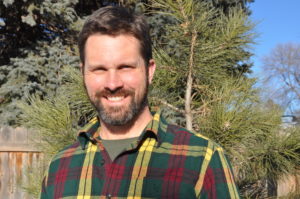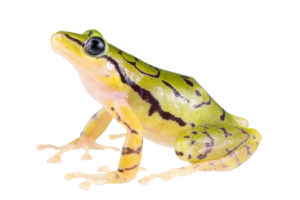
CSU’s Global Biodiversity Center will hold a summit Oct. 11 – 12 in the Lory Student Center. The event, which is open to the public, includes keynote talks from M. Sanjayan, Conservation International’s chief executive officer, and Wendy Palen, an expert in aquatic conservation from Simon Fraser University. Chris Funk, associate professor in CSU’s Department of Biology and director of the Global Biodiversity Center — housed within the School of Global Environmental Sustainability — talked with SOURCE recently about biodiversity, and related research at the university.
Q: How do you define biodiversity?
Funk: Biodiversity is all of life’s variation, ranging from genes, to microorganisms, to ecosystems. It’s all the variation you see when you go outside, different trees and even different breeds of dogs.
Q: What are some of the biodiversity research projects taking place at CSU that you’re excited about?
Funk: CSU is really special in the amount of biodiversity research that is going on. There are hundreds of research projects in many colleges and departments, and we are actually applying science to real-world problems. That’s something we excel at. CSU researchers are studying tiger conservation in India, trying to better understand how the manipulation of river flow with dams affects different species, how climate change is affecting ecosystems, and analyzing the biodiversity of grasslands.

At the same time, the hundreds of projects are not really coordinated. We’re trying at the Global Biodiversity Center to act as a central node that connects researchers across campus. We also link our expertise with people who work in government agencies, and international conservation groups.
People are realizing more and more that to tackle complex biodiversity problems, we need not only wildlife biologists but also human dimensions experts, social scientists, and economists. These types of integrative teams are necessary to really have an impact. We can make a model of how to prevent a species from going extinct, but we have to figure out how you get people to care about it, so they’re engaged. That’s the kind of work we’re doing at the center.
Q: Earlier this year, you and colleagues from South America discovered a new endangered frog species. What do discoveries like this mean for biodiversity?
Funk: We were characterizing the genetic differences among populations of the ornate rainfrog, which was thought to be a single species of frog until we uncovered one population that was strikingly different from all others and turned out to be a distinct species.
Oct. 11
5:15 p.m. – Conservation International’s M. Sanjayan kicks off the event with a keynote speech at Lory Student Center Theater
Oct. 12
9 a.m. – Preserving biodiversity: perspective from economics, health, food, water and energy
Lory Student Center North Ballroom
11 a.m. – Fostering a biodiverse future: transforming awareness into action, Lory Student Center North Ballroom
1:30 – 2:30 p.m. – Poster session, Lory Student Center Cherokee Ballroom
3 – 4: 30 p.m. – Closing keynote from Wendy Palen, Simon Fraser University, British Columbia
7 – 9:30 p.m. – Yasuni Man, award-winning documentary about a conflict in Ecuador that has pitted biodiversity and human rights against oil and commercialization. Lory Student Center Theater
The summit is open to the CSU community and public. No registration is required.

In order to conserve something, you have to know it exists. There are plenty of examples of species going extinct before they have been discovered.
There’s way more diversity out there than we ever imagined. We know there are close to 2 million described species, but there’s a lot of debate about how many species have not yet been discovered.
Q: How can the average person contribute to protecting species and plants, and help with global biodiversity?
Funk: There’s a ton of different things people can do as individuals: be informed, read the news, understand how policy decisions are going to affect wildlife and the natural resources we all depend on. We can all make an effort to try to conserve energy, conserve natural resources in our homes, make smarter decisions on how we get to work, and what we eat.
People can get involved with organizations that are devoted to conserving biodiversity, like our center, Conservation International, or The Nature Conservancy.
Businesses can have a huge positive effect as well. They often get pressure from their customers that biodiversity is important. Think about the brewing industry in Fort Collins; one reason the brewers set up shop here is for the good water. We have insects in streams that filter particles from the water, cleaning it in the process. Companies are able to get services from biodiversity that isn’t quantified. They get carbon sequestration from the forest, clean water, and our food.
To stay informed, you can read articles that have to do with biodiversity almost every day in the New York Times, Washington Post, Coloradoan or Denver Post. I skim the news and there is rarely a day when I don’t see an article related to biodiversity. I would also suggest looking at Mongabay.com, which is focused on environmental news. There’s also a new publication, Anthropocene Magazine (formerly known as Conservation Magazine), published by Future Earth.